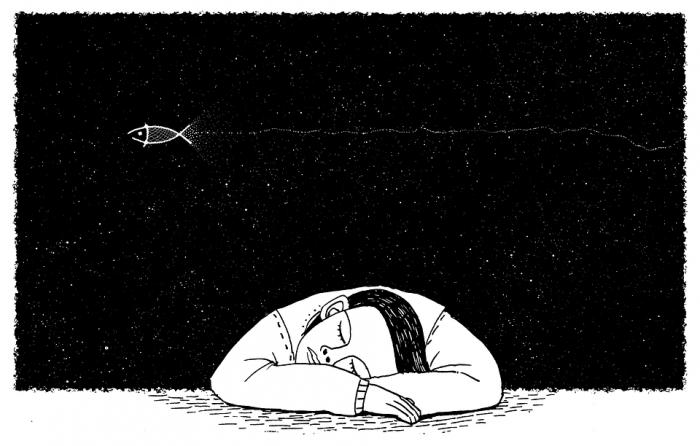The quality of your sleep is defined by the balance or imbalance in your doshic constitution.
Learn more about your doshas here.
Are you a light sleeper or a heavy sleeper?
That is a good question—especially for me. I was rather famous for my deep, almost instantaneous ability to sleep. I could fall asleep in a car, a bumping bus, an airplane, or a sailboat and be completely obliterated from the world.
Once, on a catamaran boat on a vacation to Dominican Republic, the tourists lay sunbathing on a net on the open sea. I dozed off into my other world. The guide decided to play a prank on me by tickling my ear. Unfortunately the joke turned on him. I refused to surface from my slumber and he had to give up! With all the tourists, sunshine, lapping waves, tickling in my ears, my sleep did not give in. I was in a deep, deep slumber.
That was in my pre-ayurvedic days, before I ardently started studying and experimenting with Ayurveda. So it was an ironic twist to my destiny when my ability to sleep reduced, and I occasionally started experiencing trouble falling asleep.
I can explain this now—I had a kaphic disposition to my sleep. Also ama, which are toxins accumulated in the mind-body complex, mimic the heavy energy of kapha. An Ayurvedic detoxification cleared some of the ama. My irregular lifestyle, induced by my mentally vata nature and age, has taken its toll, and now the vata imbalance has toppled over the kaphic influence.
Our sleep patterns can explain a lot about what’s going on in our bodies and minds. This depends on not only our mental temperament, but our lifestyle as well.
A healthy mind and body—that is set in rhythm to nature—will allow us to sleep easily after the sun has set, or at the latest, around 10 p.m. And we will sleep soundly until the sun rises, or around 6 a.m. (This can vary depending on season and location.) That is how the animal kingdom is tuned into nature, and that is how it should be for humans as well.
Our sleep quality between 10 p.m. to 12 a.m. is most nourishing for the brain, providing our bodies with prana. If you miss sleeping during this time period, the body takes weeks to make up those two hours of restorative sleep. Chronic sleep loss is hard to recover. Between 2 to 4 a.m., the body is completed relaxed and energized. Between 4 to 6 a.m., the body is full of optimism and happiness. Waking up at this time puts you in a good mood, and it’s the best time for meditation, prayer, and yoga.
Unfortunately, modern life has thrown this rhythm awry with the invention of artificial light in the 19th century. But in the 21st century, it has been badly mauled with television, 24/7 internet, and now the greatest intrusion into our lives, the unstoppable smart phone. We can neither sense nor obey the signals to sleep sent by the body.
After a lifetime of ignoring the signals, the sleep mechanism is broken down by our dysfunctional habits.
That is one issue. The others are varied, including stress and late-night dinners—with these, the body cannot relax, or has to digest food instead of relaxing into a state of deep rest. When we are young and healthy, the body is more resilient and it is easier to go back to rhythmic sleep with a little correction. As we age, the resilience is gradually lost. So now the body cannot sleep, or sleeps and then wakes up, and keeps tossing and turning.
And now to this mix, we add dysfunctional doshic imbalances that can affect the quality of your sleep.
Dr. Allison Siebern, associate director of the Insomnia & Behavioral Sleep Medicine Program at Stanford University, has found a genetic link to sleep patterns—night owls and morning larks. Owls, Ayurvedically speaking, are imbalanced in vata, succumbing to being overly mentally stimulated. And morning larks are balanced and grounded with vata. Nonetheless, all constitutions can work together with nature’s rhythms.
Vata:
If your vata is aggravated, then you may find it difficult to fall asleep, or your sleep is broken during the second half of the night—in which the sleep is shallower and most of the dream time occurs. This means a light sleeper can be easily disturbed. And if you have already aggravated your vata by an irregular lifestyle, then your sleep will become broken, easily disturbed, and unrefreshing.
The vata constitution, which is the most delicate constitution, is most in need of a deep, sound sleep to counter the excessive vata tendencies. It is important for people with this constitution to settle an hour or two before bedtime, and to remove all possible stimulation. Overthinking should be replaced with meditation or soothing mantras to calm the mind.
Pitta:
People with a pitta constitution, those who are more driven and goal-oriented, are mostly moderate sleepers—settling in the middle between the light vata sleeper and the heavy kapha sleeper.
However, if your pitta is aggravated, or you have excessive inner emotional turbulence, then you would likely get up around 3 a.m. One of the reasons could also be that you are feeling hot, meaning the pitta energy is acting up. Make sure your room is cool, and you are not stimulating yourself with overly spicy food.
Kapha:
The kapha constitution is the heaviest and most sturdy of the types. If your kapha is aggravated, you probably sleep long and deeply. For a kapha constitution, that is not good—it simply aggravates your kapha tendencies. You feel groggy and grumpy when you get up after oversleeping.
Those with a kapha dosha will also have a great urge to take afternoon naps. Kaphas need the least amount of sleep. Getting up just before the rising sun will support you in feeling uplifted all day.
A study on doshas and sleep patterns concluded that higher vata scores predicted less restful sleep, while higher kapha scores are associated with more afternoon naps.
The key to good sleep is to understand your prakriti or original doshic constitution and to support it in a state of balance.












Read 1 comment and reply